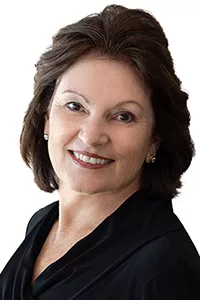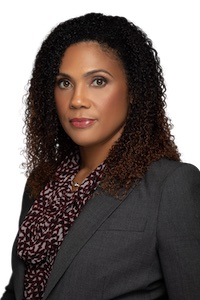By Laureen DeBuono, Heather Ogan
Insights from the Annual Stanford Directors’ College
We recently attended the 30th Annual Stanford Directors’ College, and, as usual, the College and its speakers delivered a wealth of information that we would like to share with our readers.
The College follows the Chatham House Rules – while we can share information presented at the meetings, we cannot attribute the information to any speaker or participant, as the aim of the rule is to create a safe space for open dialogue.
The New US Administration and Corporate Governance
A central theme of the meeting was the new Administration and its imprint on corporate governance, noting that this imprint is evolving and is likely to focus on providing only useful information to investors. We may also see a streamlining of securities rules and regulations.
These are among the ideas being bandied about with the SEC:
- Environmental, Social, Governance (ESG) is not “dead” – but likely rules and regulations around ESG will return to what “was before” it elevated to a more relevant topic.
- Less disclosure is needed because it is overly complicated and may not be valuable to investors.
- A slimmed-down version of disclosure is needed for smaller companies.
- Personal security costs for executives are increasing, and while there is a need for disclosure of these costs, we should treat them similarly to the cost of security for a company’s tangible assets, and this should be deductible for the company.
- SEC underestimates the costs of compliance for companies and needs to help bring these costs down.
- Audit costs are out of control and need to be brought down.
- Enforcement strategy will change going forward – only “lying, cheating and stealing,” so to speak, will be enforced; there will be less focus on the “foot faults” of the regulations and rules. The re-focus will be on “harm” – harm inflicted by individuals, not the entity.
- Public Company Accountant Oversight Board (PCAOB) – Are they doing what they are supposed to be doing, or have they gone too far? Note that the PCAOB has issued 24 new standards focused on Quality Controls, which are principles-based, and include a new annual QC certification for auditors. The SEC is going to look closely at what the PCAOB does, and whether the PCAOB is truly effective, or if it focuses on “foot faults” that are cumbersome and do not really eradicate “harm.”
- Tougher rules are likely to be in place regarding Foreign Private Issuers. They do not have to file disclosures like 10-Ks, 10-Qs, and 8-Ks, yet these issuers want to access the US capital markets. They have an unfair advantage that will be scrutinized, with the regulations likely to change here.
- 404(b) is on the SEC’s radar, and while effective, it is too costly for companies currently, especially smaller companies, and will be reviewed.
Geopolitical Risk and Opportunity
Another central theme of the meeting was the current geopolitical risks and the opportunities that may arise from them. Here are some ideas that were discussed:
- USD is the world’s reserve currency, and while pressure is on it, there is no imminent danger. Moreover, what could be the next replacement currency? There really is none.
- We are moving away from a free market with this new Administration, as they have declared that it “isn’t working.” It wants to “insert” itself into the world markets with new regulations and boundaries.
- It cannot be overstated how important it is for Boards of Directors (BODs) to understand today’s geopolitical risks and their intended and unintended consequences. They then must put that into perspective when dealing with issues like CAPEX projects and where to build manufacturing facilities.
Best Practices: Governance, BOD Behavior, Artificial Intelligence
Here is a collection of the speaker’s thoughts and best practices on the following subject areas:
Best Practices in Governance
- Audit Committees are now dealing with all sorts of risks; these committees have too much on their plates; “BIG” risk, like climate, geopolitical, reputational damage, cyber, should be the purview of the entire BOD.
- Governance Committees should take on more duties and can pull responsibilities from the Audit Committee. Alternatively, the BOD may consider adding a Risk Committee. However, the bottom line is that “BIG” risk issues, as noted above, should be managed by the entire BOD.
- Nominating Committees and CEO Succession: Former CEOs should not be Executive Chairs. They need to “get out of the way.” If they stay for a finite period of time, they should only serve as a “BOD Advisor.” This is important to ensure a successor’s success. Good succession planning, as well as good succession itself, should be the #1 legacy for a former CEO.Average CEO tenure is down to its lowest level in recent history – 6 years – due to a number of factors, including more pressure than ever, risk/security factors, social media, etc. More and more CEOs are leaving voluntarily, and more of those leaving are going to PE-backed companies for the richness of the compensation package. Because of all this, CHROs are becoming more and more important to both the company and its BOD; the role should report to the CEO, not the CFO or another executive.
- BODs and BOD Candidates: When BODs are adding members, the BOD candidate should meet with every “sitting” BOD member. Once the candidate is chosen, then s/he should take part in a robust onboarding process that the company/BOD has established. Before the new member’s first BOD meeting, s/he should reach out to have at least a phone conversation with each BOD member to start to build trust and camaraderie.A typical BOD member sits on the BOD for 7-10 years. It is imperative that companies have strong Directors & Officers (D&O) insurance programs and that BOD members have both D&O coverage and a strong indemnification agreement with the company. The agreement should include the right of the director to have access to company documents in the event of any dispute or litigation, as well as the right to defense counsel.
- BOD Chair: This role is critical. S/he should ensure that all BOD members are privy to the same information when they get to a BOD meeting, and that there is transparency. A Chair’s role is to “moderate” the workings of the BOD, and be a liaison between the BOD and the CEO/management team, and attaining consensus at BOD meetings.
- Activist Shareholders and BODs: There is more year-round shareholder activism versus seasonal activism than in past years. Activists are floating more BOD-control slates, and C-Suite changes and other major company changes are a focus of activists. This is generally due to competitive analysis related to Relative Total Shareholder Return (RTSR).
Best practices at BOD meetings:
- Send materials out to BOD members one week prior to the BOD meeting
- Hold committee meetings the day prior to the BOD meeting
- Host dinner the night prior to the BOD meeting
- Facilitate a meeting between the CEO and BOD Chair the morning of the BOD meeting to discuss any issues; then the BOD meeting
- At the BOD meeting, the team should not read slides; instead, the team should assume the BOD has read the slides (hopefully!) and the focus should be on major issues and themes
- Hold an executive session with the BOD afterwards, and then a feedback discussion with the /CEO and Chair
- A strong BOD is providing oversight to the company, judging and evaluating the executive team, and advising the CEO on strategy and attainment of objectives
- The BOD does not manage the business of the company.
- Highly recommended is a two-day strategic offsite with the BOD on an annual basis.
Best practices in AI:
- AI Considerations: BODs should be paying very close attention to AI and its use in their organizations, both from the standpoint of internal use AI as well as AI as part of the company’s product offerings. There is a National Institute of Standards and Technology (NIST) AI Framework that BODs can use as a guide in building out AI risk assessment frameworks for their companies.
It is always a pleasure to return to Stanford Directors’ College to learn the most current trends in corporate governance, and we wanted to share them with you.
Amid a new Administration and rising geopolitical risks, these insights are critical for boards and executive teams setting strategy and positioning their companies for long-term success.




